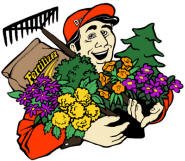The progression of fall and then winter reminds me of the problem that many of us experience caused by grazing deer on a variety of plants especially certain evergreens.
Taking a proactive approach is the best way to avoid major deer damage by spraying valuable plants with Liquid Fence. Spraying the product about mid-November and again a month later will teach the deer that their food is elsewhere.
One evergreen deer love to chew is the Taxus (Yew) genus that otherwise is a wonderfully sturdy group for sun or shade.
I think it’s utterly strange that all parts of the Taxus plant except the red aril (berry) are poisonous to humans and cattle when ingested and yet the plant is a deer salad.
Another evergreen deer love is Arborvitae. They will strip the foliage as high as they can reach.
At the nursery, we are suggesting to customers that have deer problems to plant the Thuja plicata species or more commonly known as the Western Red Cedar.
This evergreen is perfectly winter hardy to climate zone 5 and has numerous advantages over the similar looking Arborvitae genus.
The benefits of using the Western Red Cedar as a hedge or screen are:
1. As stated before, deer won’t browse the foliage.
2. The plant has a single leader so that heavy snows or ice do not split it apart.
3. Western Red Cedars grow much better in moderate shade than Arborvitae as well as growing well in all day sun.
4. Growth on Cedars is rapid sometimes as much as 3 feet per year depending on the variety.
5. Plants for a screen can be planted 5-6 feet on center making the planting cost effective.
6. For a shorter hedge or screen without the burden of trimming the variety, ‘Can Can’ grows only to 8-10 feet.
7. Although the two conifers Arborvitae and Western Red Cedar are similar they are different in that the cedar will grow again from older mature wood when trimmed while the Arborvitae will not re-grow from old wood if trimmed hard.
Right now at the nursery we have the variety Green Giant in stock that will grow to about 20 feet in 5-6 years when planted at the beginning 5 foot hedge while only gaining a width of about 6 feet.
As I have stated many times before, fall is for planting about any tree or shrub as well as many perennials but Holland flower bulbs must be planted in fall so the cool moist soil will foster root growth so that the flower bulb can fulfill its spring promise of a flower.
See you at the nursery,
Tom
Friday, October 14, 2011
Subscribe to:
Post Comments (Atom)




No comments:
Post a Comment